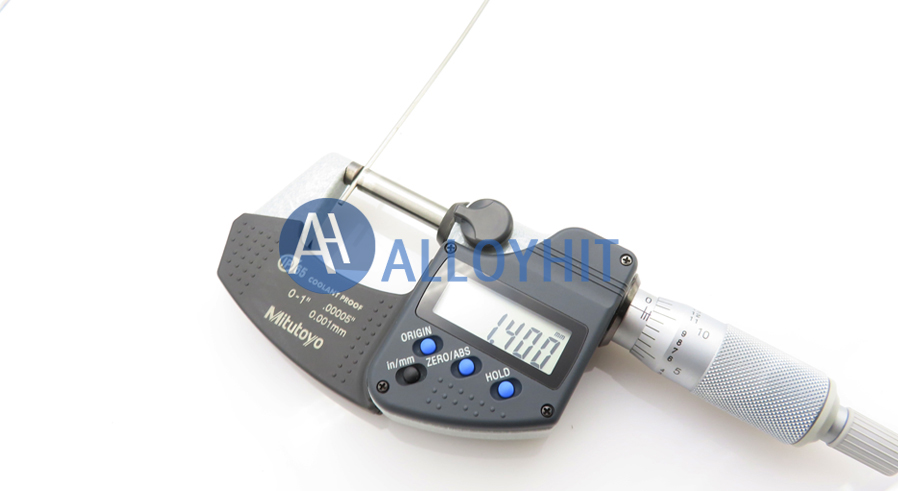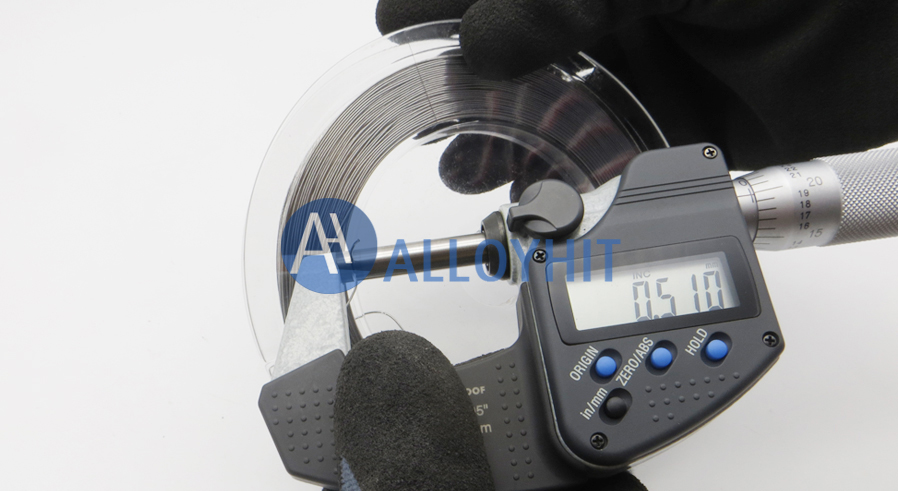Nb53Ti47
Nb53Ti47 is a superconducting material with specific physical properties. The niobium and titanium content of this alloy is 53% and 47% respectively, which is a common composition ratio of niobium titanium alloy. The melting point of niobium titanium alloy decreases as the niobium content increases, so the melting point of Nb53Ti47 is between pure titanium and pure niobium.
The density and strength of Nb53Ti47 are also between pure titanium and pure niobium. By adjusting the ratio of titanium and niobium, a material that is both lightweight and high-strength can be obtained. This property makes Nb53Ti47 very useful in applications that require lightweight and high strength. In addition, although the electrical conductivity of Nb53Ti47 is not as good as traditional conductive materials such as pure copper, its excellent mechanical properties and corrosion resistance make it a preferred material in some high-performance electronic devices.
Nb53Ti47 exhibits excellent corrosion resistance in chemical properties, including corrosion resistance in seawater, chloride, sulfuric acid and weak alkaline environments. This corrosion resistance comes from the ability to form a dense oxide film on the surface of the alloy, which effectively isolates the corrosive medium1. In addition, Nb53Ti47 can also maintain good oxidation resistance in high temperature environments, which makes it widely used in high-temperature industrial processes.
The advantages of Nb53Ti47
Superconducting performance: Nb53Ti47 has a high critical temperature and critical magnetic field strength, which makes it perform well in environments requiring low-temperature superconductivity and suitable for various superconducting applications.
Mechanical properties: By adjusting the composition ratio, this alloy can obtain a material that is both lightweight and high-strength, which is suitable for engineering applications that require high strength and lightness.
Corrosion resistance: Nb53Ti47 exhibits excellent corrosion resistance in a variety of corrosive environments, including seawater, chloride, sulfuric acid and weak alkaline environments, which makes it more reliable in harsh environments.

The forms of Nb53Ti47 we provide

Nb53Ti47 Wire
The minimum diameter can reach 0.5mm

Nb53Ti47 Tube
The minimum wall thickness can reach 0.125mm
Melting and casting methods of niobium-titanium superconducting alloy
(1) Vacuum consumable arc furnace melting and casting method using powder as raw material – niobium and titanium powder are used as raw materials, mixed in appropriate proportions, molded into electrodes, and then melted and casted twice or more in a vacuum consumable arc furnace after high-temperature solidification and welding to obtain niobium-titanium alloy ingots.
(2) Vacuum consumable arc furnace melting and casting method using strips or rods to prepare electrodes – niobium and titanium raw materials are smelted and processed to obtain strips or rods, which are then prepared into electrodes and melted and casted twice or more in a vacuum consumable arc furnace to obtain niobium-titanium alloy ingots.
(3) Vacuum electron beam furnace and vacuum consumable arc furnace combined melting and casting method using strips or rods to combine electrodes – the same method, niobium and titanium are made into strips or rods respectively, and prepared into electrodes, and then melted and casted in a vacuum electron beam furnace and vacuum consumable arc furnace to obtain niobium-titanium alloy ingots.
(4) Vacuum electron beam furnace casting method using strips or rods as electrodes – niobium and titanium are made into strips or rods respectively, which are prepared as electrodes, and cast twice or more in a vacuum electron beam furnace to obtain niobium-titanium alloy ingots.
(5) Vacuum white-consumption arc furnace and vacuum shell furnace combined casting method using high-quality sponge titanium and electron beam purified niobium rods as electrodes – high-quality sponge titanium is pressed into rods, which are combined with niobium rods purified by vacuum electron beam furnace casting to form electrodes, and cast into niobium-titanium alloy ingots in vacuum white-consumption arc furnace and vacuum shell furnace.
The above niobium-titanium superconducting alloy casting method has some advantages in preparing high-uniformity niobium-titanium alloy using niobium and titanium powder as raw materials, but it is easy to cause more interstitial impurities and the process is complicated. Niobium-titanium superconducting alloy ingots cast by vacuum electron beam furnace using niobium and titanium strips or rods as electrodes can obtain alloys with excellent plasticity containing impurities, especially very few interstitial impurities, but the titanium content in the alloy component niobium fluctuates in a relatively large range. Generally, the titanium content of different parts of niobium-titanium alloy ingots cast by vacuum consumable arc furnaces fluctuates within ±1.5%, while the fluctuation range of vacuum electron beam furnace casting is ±3% or slightly more. The fifth niobium-titanium alloy casting method is a unique method we use. This method is simple and can obtain niobium-titanium alloy ingots with high uniformity and niobium-titanium alloy with low impurity content.

 +86 13120915623
+86 13120915623